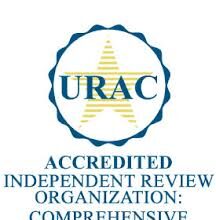
Who in your life are you most likely to catch a cold or the flu from?

Who in your life are you most likely to catch a cold or the flu from?
This year the CDC is reporting an unprecedented number of cold and flu cases across the country. A primary method of infection involves coming into contact with droplets of influenza when someone with the flu coughs or sneezes. When we breathe the infectious through our mouth or nose, we inhale the virus and get sick. Scientists estimate a single sneeze can send over 100,000 germs into the air at speeds of 100 miles per hour.
However, new research from Wake Forest School of Medicine suggests that infected persons can spread the virus without even coughing or sneezing. In the study, researchers found that people can spread the virus as far as six feet away and revealed a new category of sick folks, “super-emitters” – those who emit more of the virus than others.
Who are the “super-emitters” getting you sick in your life? Check out our list of suspects who may be infecting you with the common cold and flu.
- Your kids – Young children are highly susceptible to colds and flu because their immune defenses are less developed and tend to contract between six and ten colds each year. If your child attends school or daycare, he or she may be carrying home the infectious germs of classmates. Make sure to disinfect your child’s toys and objects that travel back and forth to school such as sports equipment and writing supplies.
- Your co-worker – When you work in close proximity to your co-workers and colleagues for extended periods of time, you expose yourself in increased risk of picking up a bug. Sharing office items, such as staplers, pens, and calculators can supercharge the transmission of nasty cold and flu bugs throughout the office. And workplace absenteeism has a hefty cost: influenza costs the economy nearly $40 billion annually.
- Your partner or spouse – You may have vowed, “til death do us part”, but bets are off when it comes to the flu. If your partner or spouse comes down with a cold, sleep in separate beds or slumber resting in opposite directions. Make sure to wash your sheets with hot water to kill of any infectious germs, since the virus can attach itself to surfaces and survive for hours outside the body.
- Your workout buddy – Health clubs and gyms can be breeding ground for the cold and influenza. Kettle bells, weight plates, and exercise bells are touched constantly by hundreds of people throughout the day, aiding the spread of sickness from person to person. If you’re working out with a friend, try to keep a comfortable distance away from another and sanitize your hands and workout equipment often.
During cold and flu season, it’s best to play it safe and limit close contact with those who may be carrying the bug. Since the virus is primarily transmitted through the mouth and nose, protect yourself by using a daily antimicrobial solution to fend off germs on contact.








